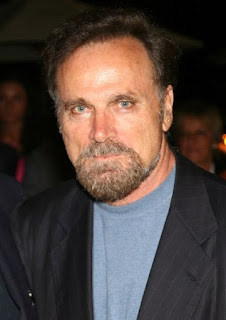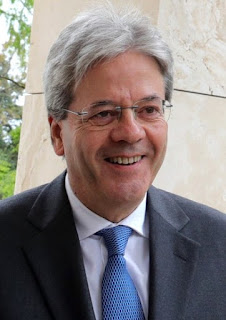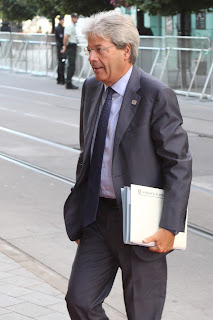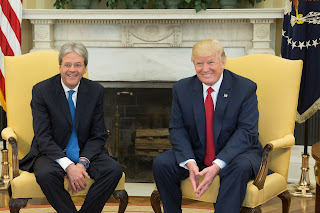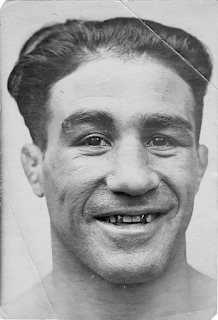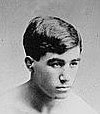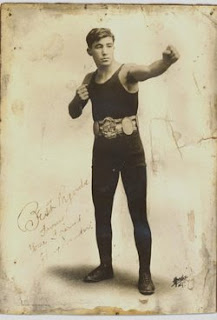Achievements overshadowed by assault on Michelangelo
 |
| Pietro Torrigiano was born in Florence in 1472 |
Pietro Torrigiano, the sculptor credited with introducing Renaissance
art to England in the early years of the 16th century but who is
best remembered for breaking the nose of Michelangelo in a fight, was born on
this day in 1472 in Florence.
The incident with the man who would become the greatest artist
of their generation came when both were teenagers, studying in Florence under
the patronage of Lorenzo de’ Medici.
Torrigiano was older than Michelangelo by two and a half
years and confessed some years later that he found his young rival to be
somewhat irritating, especially since it was his habit to peer over the shoulders
of his fellow students and make disparaging comments about the quality of their
work.
On the occasion they clashed, when Michelangelo was said to be
about 15, he was with Torrigiano and some others in the church of Santa Maria
del Carmine, studying frescoes by Masaccio.
Looking at a sketch Torrigiano was making, the younger boy made some slighting
remark and Torrigiano lashed out.
He caught him such a blow that Michelangelo, who was knocked
out cold at the time, suffered a broken nose and a disfigurement he would carry
for life.
 |
| Torrigiano's tomb of Henry VII in Westminster Abbey |
Torrigiano knew he would be in trouble and when word reached
him that Lorenzo de’ Medici was incensed by the incident he fled Florence for
Rome.
He would not return to the Tuscan city until more than a quarter of
a century had passed, by which time Michelangelo was famous, the creator of masterpieces
of sculpture such as his Pietà and David, and the wonderful frescoes that
adorned the Sistine Chapel.
In conversation with Benvenuto Cellini, a young sculptor he
was trying to recruit as an assistant, Torrigiano confessed to having been the
man responsible for Michelangelo’s crooked nose, explaining that he was regularly
annoyed by Michelangelo’s sniping comments but on this occasion had let his temper
get the better of him.
He is said to have told Cellini: “I got more angry than
usual, and clenching my fist, gave him such a blow on the nose that I felt bone
and cartilage go down like biscuit beneath my knuckles; and this mark of mine
he will carry with him to the grave.”
At the time it happened, though, Torrigiano made no such
confession. To escape the Medici wrath,
he went to Rome, where he worked briefly with Pinturicchio, but soon put his artistic
ambitions to one side and essentially went on the run.
 |
| Torrigiano's extraordinarily lifelike sculpture of Henry VII in terracotta |
A bullish man and something of a braggart, he made a living
for a while as a professional soldier, moving from one state to another.
He is thought to have been invited to England by Henry VIII,
who was looking for a court artist shortly after the death of his father, Henry
VII.
Torrigiano created sculptures in terracotta of Henry VII, Henry
VIII and John Fisher, the Roman Catholic bishop that Henry VIII would ultimately
have killed. He is also thought to have
made an extremely lifelike funeral effigy of Henry VII.
Henry VIII ultimately commissioned Torrigiano to created the
magnificent tomb of his father and his queen that can still be admired in the
Henry VII Lady Chapel in Westminster Abbey. When he met Cellini in Florence in about 1518,
he was trying to recruit young artists to work with him in England on other
commissions in the Abbey.
Cellini, horrified at his confession, refused to take up his
offer and Torrigiano left Italy again, never to return.
He spent the last few years of his life in Sevilla in Spain,
where the Museum of Fine Arts houses his sculpture of Saint Jerome
(Hieronymus), which he finished in 1525.
Still inclined to outbursts of violent temper, he became
well known to the authorities and was often in trouble. In fact, he died in prison in 1528 at the age
of 55.
 |
| Inside the church of Santa Maria del Carmine |
Travel tip:
The church of Santa Maria del Carmine, of the Carmelite
Order, is in the Oltrarno area of Florence. The Renaissance frescoes by Masaccio
and Masolino di Panicale can be found in the Brancacci Chapel. The church was
built in 1268, enlarged in 1328 and 1464 and renovated in Baroque style in the
16th and 17th centuries.
 |
| Part of Pinturicchio's fresco cycle at the Borgia Apartments |
Travel tip:
During his brief time in Rome, Torrigiano worked with
Pinturicchio – real name Bernardino di Betto – on decorating the Borgia
Apartments, a suite of rooms in the Apostolic Palace adapted for personal use
by Pope Alexander VI (Rodrigo de Borgia), with paintings and frescoes. After Rodrigo’s death in 1503 the rooms remained little
used for centuries but are now considered part of the Vatican Library.
